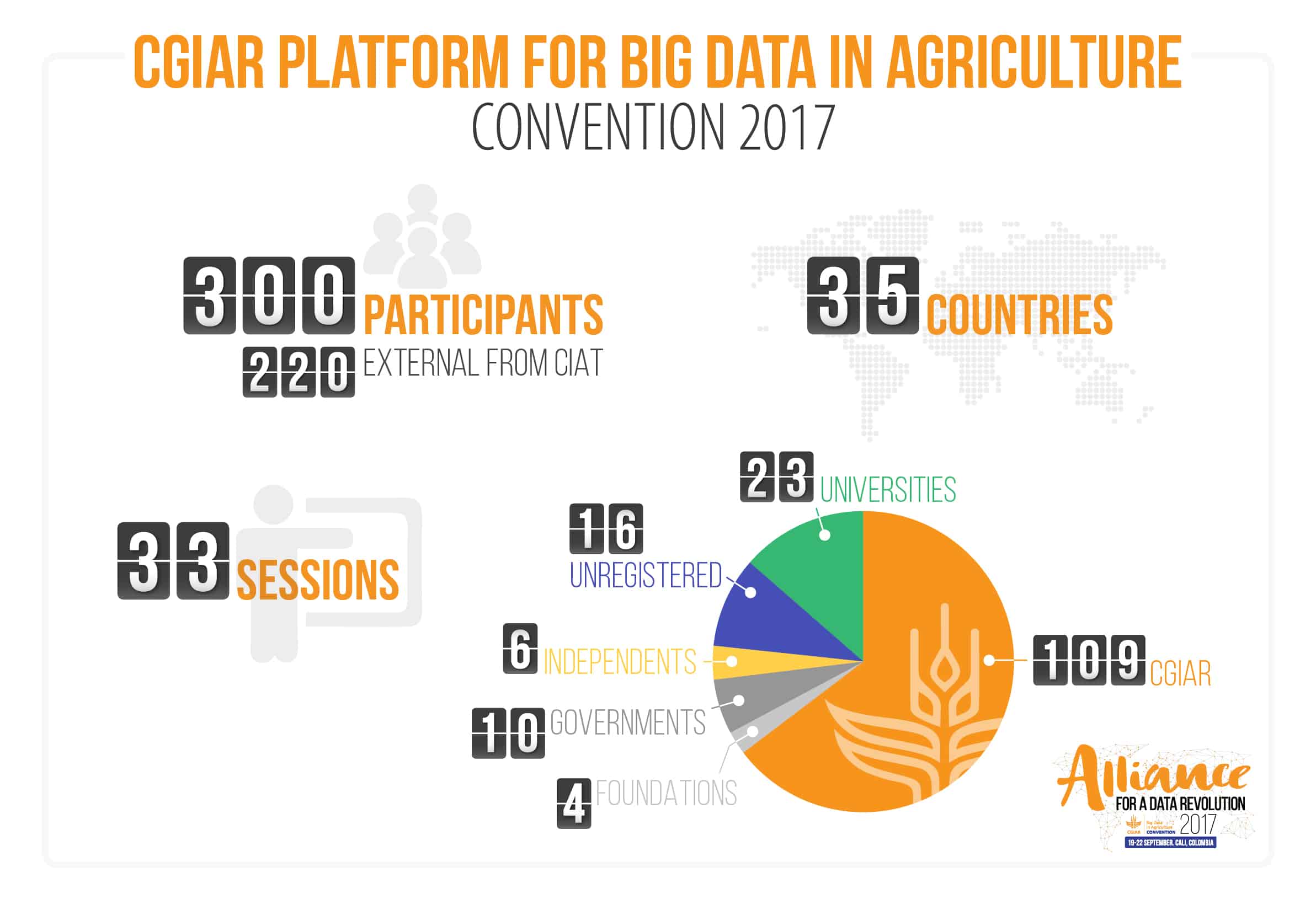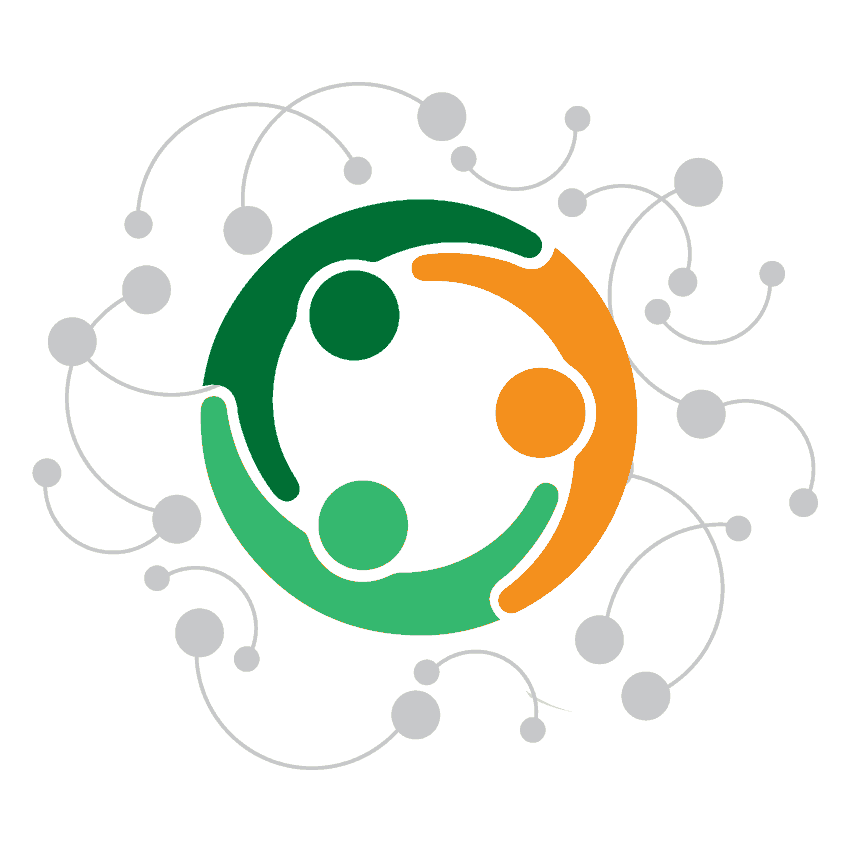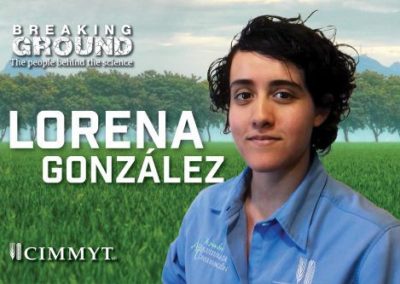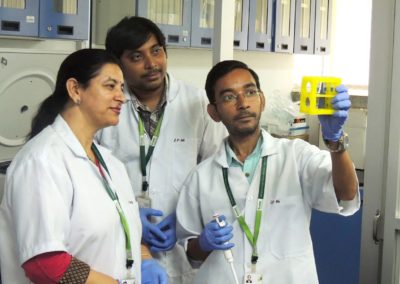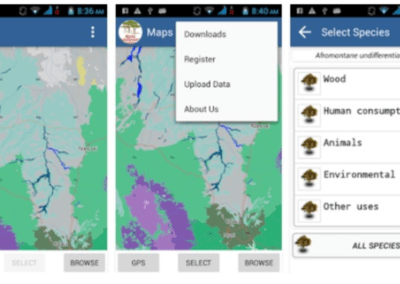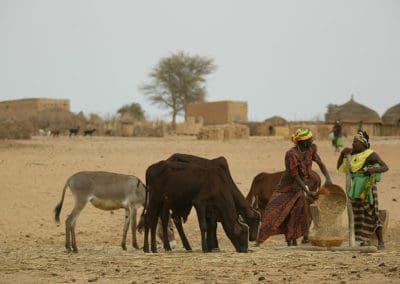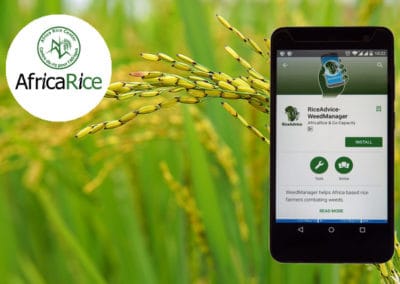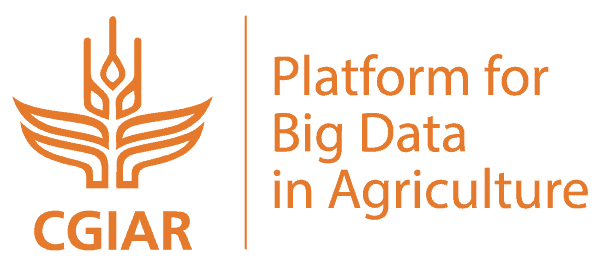
2017 ANNUAL REPORT: Building the Alliance for an Agricultural Data Revolution
The Platform for Big Data in Agriculture is CGIAR’s key initiative to leverage e-research and data-driven impact to reduce poverty, improve food and nutrition security, and support natural resources and ecosystem services worldwide. The Platform, which officially launched in May 2017, aims to effect digital transformations both inside and outside of CGIAR. Scroll down to discover what has been achieved so far.
The Platform for Big Data in Agriculture is CGIAR’s signature initiative to leverage e-research and data-driven impact on the path to reducing poverty, improving food and nutrition security, and improving natural resources and ecosystem services worldwide. The Platform, which was officially launched in May 2017, aims to effect digital transformations both inside and outside of CGIAR. Scroll down to discover what happened during this first year of existence.
YEAR IN REVIEW 2017
The birth of the platform
It is estimated that 2.5 quintillion bytes (2.5 trillion gigabytes) of data are generated each day worldwide. The CGIAR alone surveys 180,000 smallholder farmers every year. However, agriculture lags far behind other sectors in terms of digitalization and all this wealth of information is mostly not used by farmers.
“Better use of data will help drive better policy decisions, helping solve development problems more quickly, cheaply, and at a greater scale than before.”
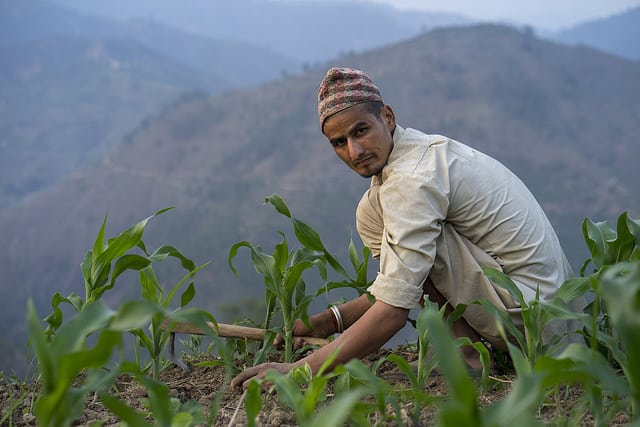
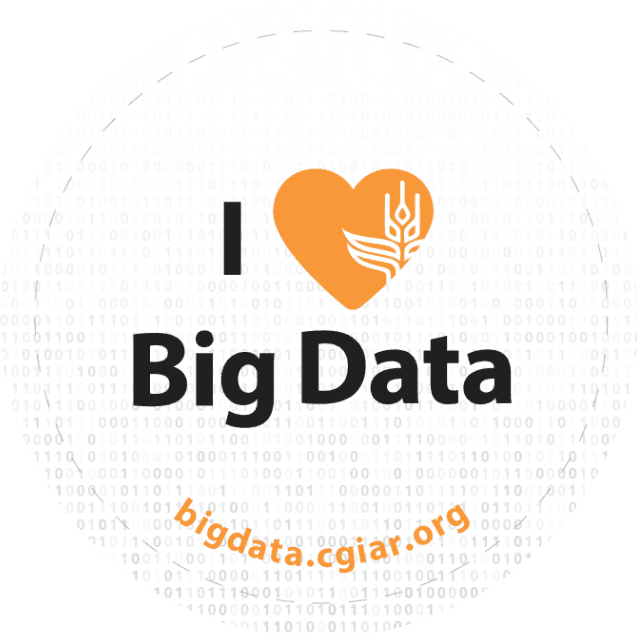
 15 May 2017 The Platform is born
15 May 2017 The Platform is born
.@ajarviscali of @CIAT_ launching the @CGIAR #BigDataInAg platform at the #ICT4D2017 @ICT4DConference pic.twitter.com/DAPwuknkV1
— ICRISAT (@ICRISAT) May 15, 2017
The Platform for Big Data in Agriculture was officially launched at the ICT4D Conference in Hyderabad, India on May 15, 2017 – the culmination of nearly two years of consultation with over 40 private, non-profit, and public stakeholders in digital agriculture worldwide.
As the largest network of agricultural research organizations in the world, CGIAR is uniquely positioned to be a thought leader and global convener on the use of big data and information technology in agriculture. In this way CGIAR will become a broker of big data information, actively promoting data-driven agricultural development.
Building the Alliance
The power of the Platform resides in its broad, global network of partners. Coming from the public and private sectors, and developing or developed countries, experts all over the world share their expertise through the Platform on fields as diverse as agronomy, climate modelling, genomics, analytics, ICT deployment, amongst others.
Platform partners:
The first annual CGIAR Convention on Big Data in Agriculture
On 19–22 September 2017 the Platform convened some 300 global innovators, researchers, and thought leaders from public, private and non-profit partners in Palmira, Colombia for the first annual CGIAR Convention on Big Data in Agriculture.
The Convention opened the way for new collaborations to shape the future of digital agriculture in developing economies.
Explore the network visualization below to find out more our current partners and participants to the 2017 Convention. ↓
Following the Convention, the Platform began discussions with companies offering cloud computing and storage services (exploration of use-cases and collaborations with analytic and cloud services providers including Google, Microsoft, Amazon, and IBM is ongoing), data analytical infrastructures (e.g. University of Minnesota Supercomputing Institute, IBM), machine learning service providers (Google TensorFlow, IBM Watson), and partners providing new pathways to data analysis or impact at scale (e.g. the Digital Impact Alliance to liaise with the mobile industry).
2017 Partnerships Highlights
→ Bridging data gender gap
The Platform has teamed up with CGIAR’s Collaborative Platform for Gender Research to’ co-design innovative uses of data science to help bridge gender divide in data; a key step to ensure women are not left behind in digital agriculture revolution.
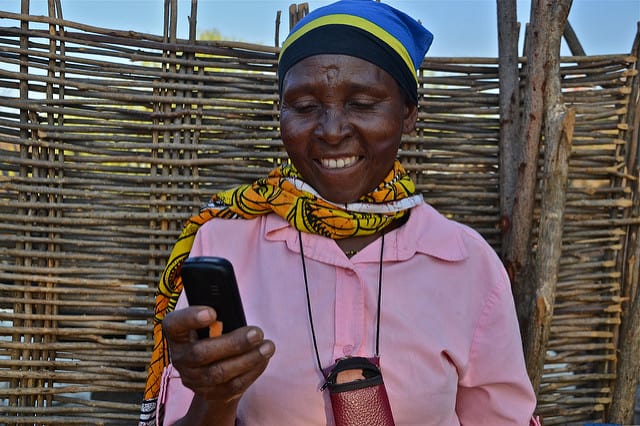
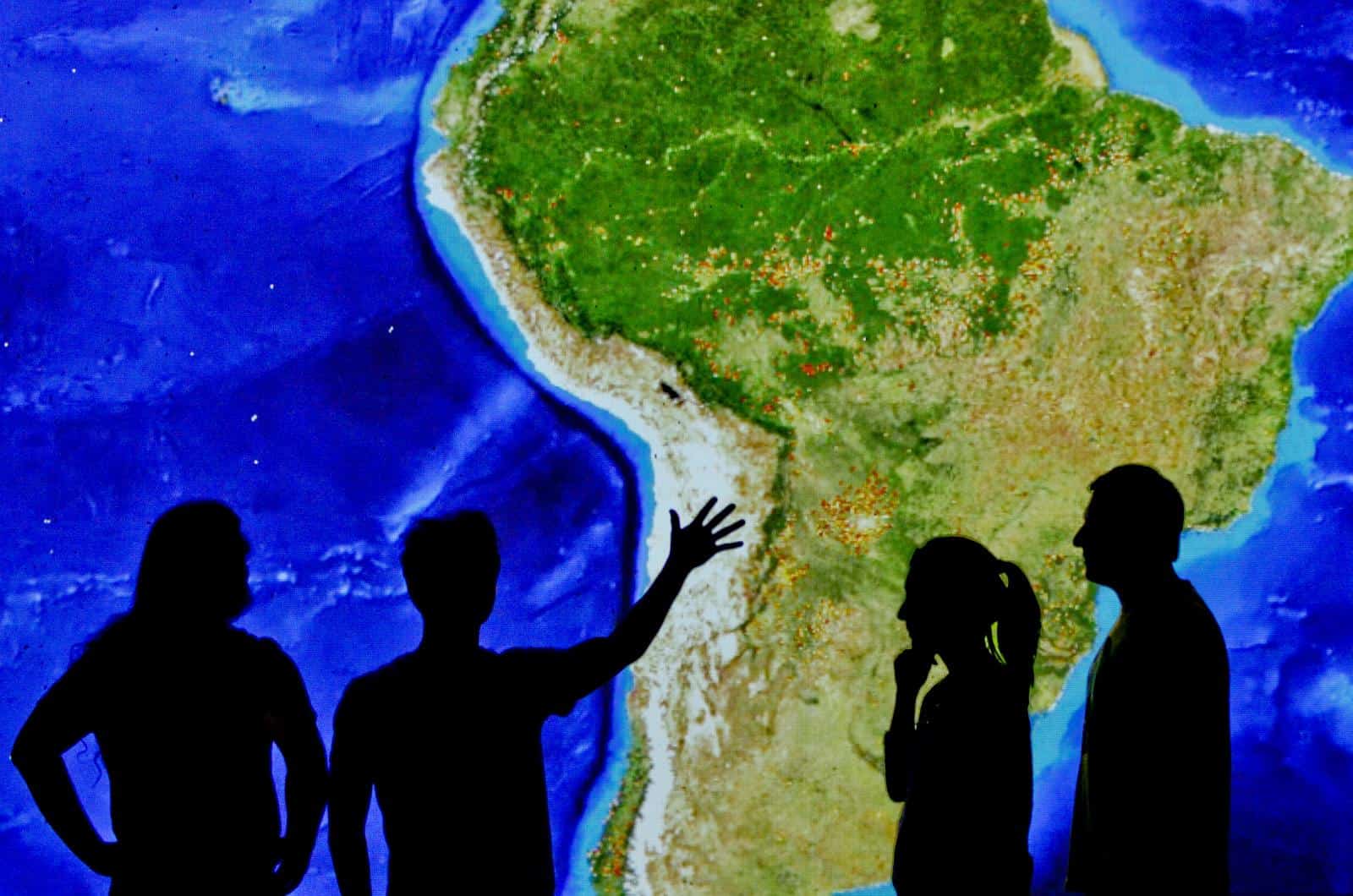
→ Private sector partnership for geospatial analysis
The Platform facilitated an alliance with imagery provider Digital Globe, enabling researchers across CGIAR to access high-resolution satellite imagery and run analysis on it in the cloud.
Early Results
This 6-year platform (2017 – 2022) will provide, by implementing initiatives under three Module pillars, global leadership in organizing open data, convening partners to develop innovative ideas, and demonstrating the power of big data analytics through inspiring projects. Under each Module the Platform aims to effect several digital transformations, for both inside and outside of CGIAR, including: mobilizing CGIAR data to accelerate research and spur new data-driven innovations, building collaboration across our organization and with the wider sector, and leveraging CGIAR expertise while claiming a unique leadership voice in digital agriculture.
Module 1: ORGANIZE
The Platform has provided support to CGIAR and partners to fully comply with open-data and open-access principles by addressing technical and organizational challenges. It also addressed critical gaps, both organizational and technical, expanding the horizon of CGIAR research.
Module 2: CONVENE
The platform has brought together big data practitioners with global private sector brands, local entrepreneurs, universities, and others, in spaces that encourage interaction and innovation to solve development problems.
The CGIAR Big Data in Agriculture Convention
The Platform produced the first annual CGIAR Convention for Big Data in Agriculture in September 2017, convening some 300 global innovators, researchers, and thought leaders from public, private and non-profit partners in Palmira, Colombia. The content and attendee list was carefully curated to foster new alliances and advance the discipline of digital agriculture for CGIAR and the sector. The Convention was an important vehicle for recruiting new Community of Practice (CoP) members, and attendees identified critical policy, infrastructure, and investment priorities for the agriculture development sector and contributed to a genuinely multi-stakeholder plan of action for the Platform.
The Communities of Practice (CoPs)
The Platform established Communities of Practice (CoPs) around six relevant topics. For each, key actors across CGIAR and partners to the Platform were identified, and the CoPs started to facilitate improved knowledge management, define collective priorities for driving the science forward and fill critical gaps identified by participants.
Crop Modelling
The Crop Modelling CoP funded three mini proposals to support activities related to modelling that would achieve a demonstrable boost/impact through injecting a small amount of funding. The Crop Modelling CoP started to develop 4 draft review articles that seek to document level-set crop modeling activities and potential impacts from CGIAR centers and partners, with a specific focus on how best to leverage integrated Genotypic, Environmental, Crop Management, and Socio-economic data. During 2017 the CoP grew to 204 members, including CGIAR scientists (40%), research institutes and academia (30%), private sector (20%) and NGOs, government and multilateral organizations (10%).
Socioeconomic
The Socioeconomic CoP formed working groups on gender, ontology-independent structural metadata schema, ethics, privacy and cyber-security, and blockchain. It also identified the need for a socioeconomic data ontology and roadmap for its development. In 2017 the CoP had about 170 members of which a quarter were CGIAR scientists, a quarter academia, a fifth private sector, and the rest NGOs, government, multilateral organizations. Visit the COP page →
Data-Driven Agronomy
The Data-Driven Agronomy CoP identified key actors and initiatives working on data-driven agronomy and gauged strengths and critical gaps across CGIAR and strategic partners, in the process further defined the vision of the CoP. The CoP developed a map of actors working in: weather and climate, soils, crop management and support for extension services. The Data-Driven Agronomy CoP grew to 280 members, a diverse group from the CGIAR centers, research institutes, academic centers, NGOs, public and private sector actors. Visit the COP page →
Geospatial
The Geospatial CoP drafted a position paper on what factors would unlock the potential of precision agriculture in the tropics, assessing its feasibility for crops, livestock, forestry, and fishery. Moreover, the CoP developed the geospatial data cataloging and analysis features of GARDIAN that were soft-launched at the Convention. This tool was developed to serve the functionality of cataloging, visualization, and spatial analysis of large geospatial datasets published by CGIAR. Visit the COP page →
Ontologies
The Ontologies CoP developed new trait ontologies in Crop Ontology and updated the Agronomy Ontology (AgrO) to better integrate with digital fieldbooks. This constituted a critical step for improving the quality and organization of agronomic research data from the point of collection. A collaboration was launched during the Convention with the Socio-Economic Data CoP to start a working group that will address the ontology gap for socio-economic data. The objective supports interoperability of biophysical and socio-economic data, to facilitate such work as studies on the potential adoption of breeding products and looking at gender-and youth-sensitive data and meta-analyses. The Ontologies CoP also engaged several centers in the development of ontologies-based fieldbooks and statistical analysis modules with multiple centers and programs. The CoP grew to 140 members in 2017. Visit the COP page →
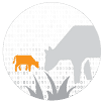
Livestock Data
The Livestock Data for Decisions CoP joined at the end of the year. Visit the COP page →
Module 3: INSPIRE
Module 3 consists of putting into practice the opportunities of using open data to solve development problems faster, cheaper and more efficiently.
The Inspire Challenge
In 2017 we challenged partners, universities, and others to use our data to create pilot projects that democratize data-driven insights to inform local, national, regional, and global policies on agriculture and food security in real time. We received more than 120 proposals from applicants from 37 countries.
During our September convention, we awarded grants of US$100,000 to each of the five winning ideas:
- Seeing is Believing: Personalized Crop Advice for Rural Farmers (CABI & IFPRI);
- Pest and Disease Monitoring Using AI (CIAT, CIP & IITA);
- Facebook Chatbot Livestock Advisory Service (FarmInk & ILRI);
- IVR Marketing Service (Voto & CIMMYT); and
- Real-Time Diagnostics for Wheat Rust (EIAR & CIMMYT).
Projects wrapped up in-field testing and learning by the fall of 2018, each with encouraging preliminary results. All are seeking pathways and partnerships for replication or scaling
Data-driven innovations from across CGIAR
What’s Next?
Decoding the Data Ecosystem
The CGIAR Platform for Big Data in Agriculture aims to democratize decades of agricultural data to mine information and develop rapid, accurate and compelling recommendations for farmers, researchers and policymakers. But the data ecosystem for global food security is complex. It is nothing less than all information infrastructures, enabling policies, data sources, modeling and analytic approaches, applications and tools used to capture, store, analyze and apply data for impact in society and in the natural world. The data ecosystem for food security is also incomplete. The data sources, communications, and connections for food security must bridge scientific disciplines, market and food systems, social and political realities. Data must integrate with natural ecosystems worldwide, from the global to the local, across public, private, and non-profit goods, if humanity is to build the food secure future.
In 2018, the Platform will dive into ways the data ecosystem for food security can integrate with real ecosystems worldwide, from the global to the local, across public, private, and non-profit goods. The Big Data in Agriculture Convention 2018 will be focused specifically on discussions around Decoding the Data Ecosystem.
Learning and Capacity Building
The Platform is investing in learning and capacity building initiatives to accelerate data sharing as well as key analytic capabilities across the CGIAR. These are being delivered over a combination of in-person and online channels to raise the awareness and capability of centers to share data and to use emerging data analysis techniques.
Improving Data Quality at the Source
The Platform is investing in improving data quality at the source through promoting electronic data collection fieldbooks that leverage reference ontologies and vocabularies, as well as data cleaning and metadata tools.
In 2017 the Platform launched the Global Agricultural Research Data Innovation and Acceleration Network (GARDIAN) an online tool enabling discoverability and search across all CGIAR open data. In 2018 the Platform is working to link GARDIAN up to the Platform’s data collection tools, and common search/publication tools to encourage use/citation of open CGIAR-generated data.
Privacy Guidelines
What do we do about farm and farmer data – challenge for sector? How do we protect privacy while securing the benefits of big data? In 2017 the Platform engaged a lawyer to survey the privacy and ethics frameworks of all Centers as well as external partners, and to develop high-level risk assessments and guidelines for the Platform and the CGIAR System as a whole. The Platform continues to evaluate the technologies of privacy that can protect farm and farmer data while enabling the granular analysis needed for impactful food security research.
In 2018 the Platform will produce guidelines and actionable support for Centers and others in the sector to navigate these issues responsibly and effectively.
A Common Analytical Environment
Data is becoming more diverse, complex and richer than ever. Researchers are required to be proficient in the use of big data analysis tools to fully realize the potential of big data, and this skill set is not common and difficult to acquire. The Platform is working with prominent technical partners to provide capacity building activities, promote shared learning and through data analysis environment, and building on the data and knowledge products made findable, accessible, interoperable and reusable through GARDIAN, an online tool enabling discoverability and search across all CGIAR open data.
Digital Transformation
With Accenture Development Partnerships, the Platform is conducting an assessment of CGIAR’s digital strategy, beginning to answer such key questions as: what are the highest impact uses of data and digital tools in service of the strategies of centers, research programs and the consortium as a whole? How can development organizations best position themselves in the rapidly evolving landscape for digital agriculture? The assessment includes a blend of internal views on analytic capacity of CGIAR and a survey of other organizations that have navigated relevant digital transformations, and will inform development of digital strategy across the organization.
More Innovation
Under Module 3, the Platform will again provide up to five one-year grants of US$100,000 in pilot funding in 2018 for innovative data and information and communications technology (ICT) ideas that have the potential to lead to enhance the efficacy of development efforts. Pilot funding will, ensuring leveraging of the funding and high likelihood of further development of the ideas under the CRP in subsequent years. The selection process will happen in close collaboration with the CGIAR Gender Platform, as the two Platforms collaborate on research designs to reveal gender in food systems in new ways and examine the right follow-on interventions. In 2018 Platform will award up to $250,000 to one of the 2107 awardees to take heir projects to the next level.
Gender
The CGIAR Gender Platform assists with gender review and co-design of key activities with the Data Platform program as well as specific collaborations in research, communications, and innovation. In addition, in 2018 datasets made open access through Module One activities will be gender-disaggregated wherever applicable, and annotated with metadata and ontologies documenting the gender sensitive protocol. This will be achieved in close cooperation and guidance provided by the new partnership with the CGIAR Gender Platform. Data standards developed in Module One will also include appropriate metadata for representing the gender dimension.

Credits:
Project leader: Marianne McDade
Writing and editing: Marianne McDade and Stefanie Neno
Concept and web implementation: Stefanie Neno

